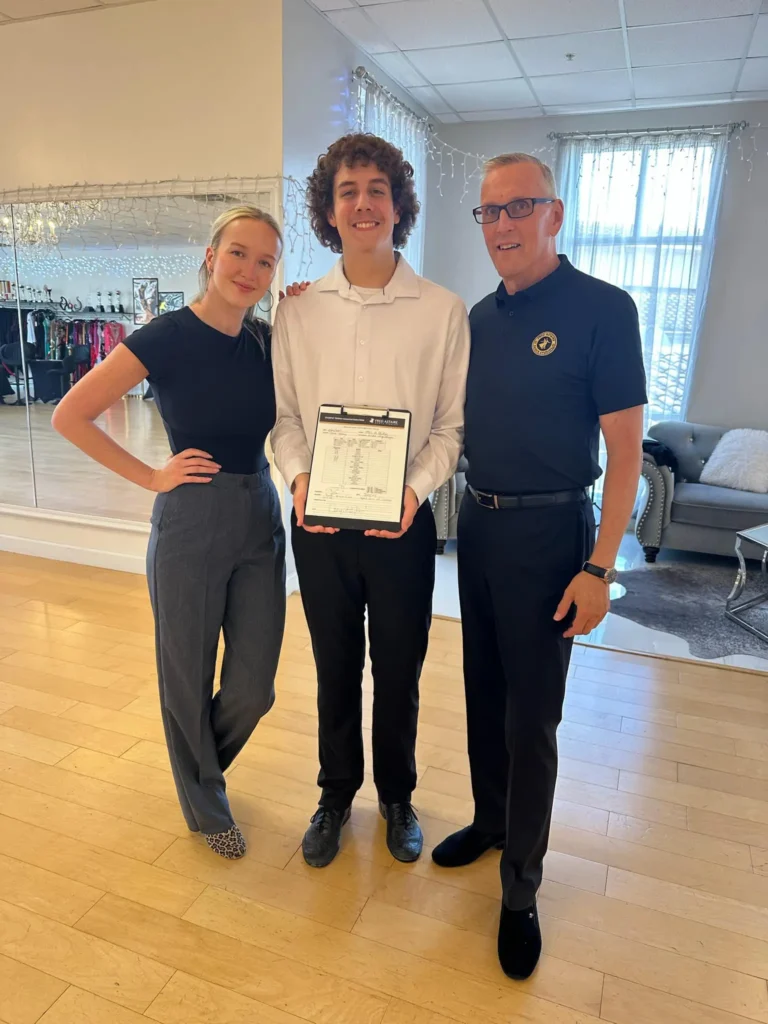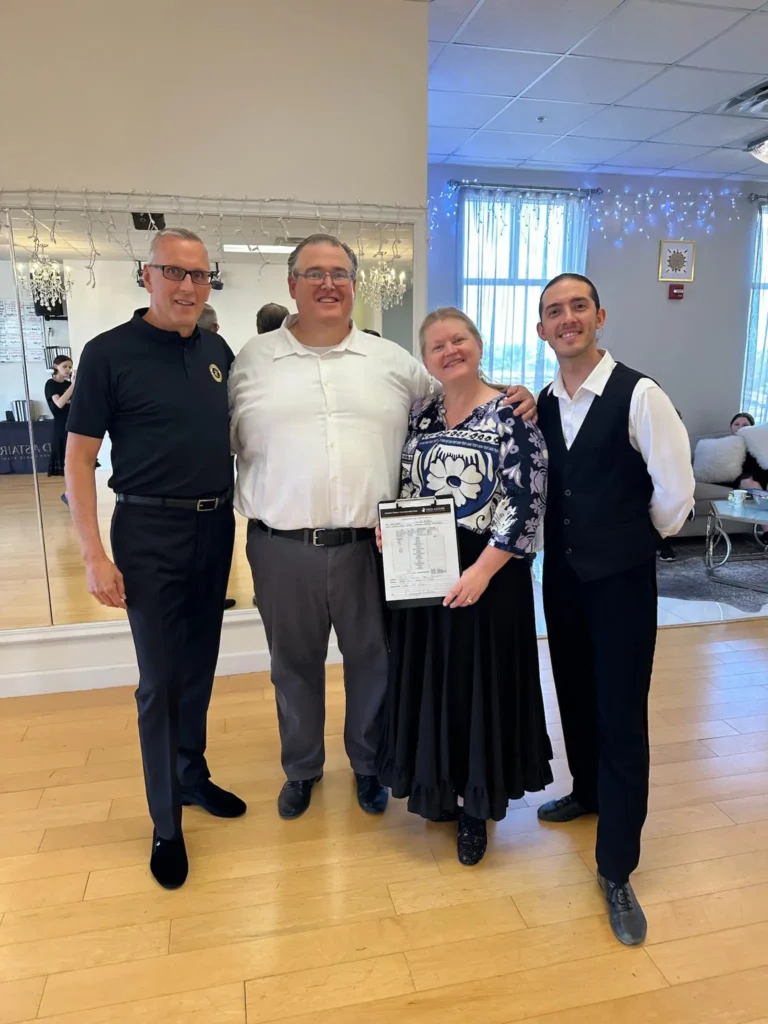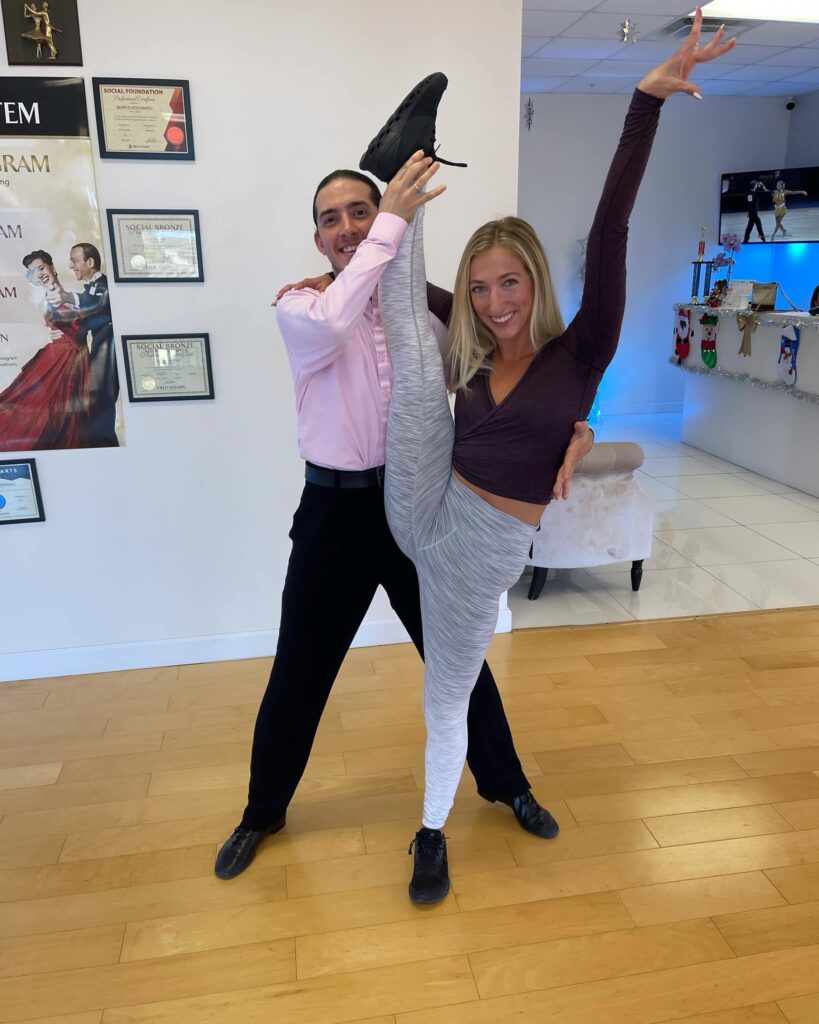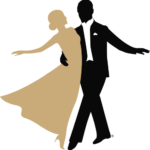Imagine just a moment when everything fades. You stop thinking about your schedule, your phone, and your stress. And you start hearing the music. Feeling it, and dancing to it.
You feel the sudden lift in your mood, the rush of endorphins, dopamine, and serotonin. All those feel-good hormones make you feel good. Your body responds to rhythm with joy. Your mind lets go. And for the first time in a long time, you feel free of worries.
That’s what ballroom dancing gives you, and it’s no wonder many people choose this dance style!
Here at Fred Astaire Doctor Phillips, we have had people come to us who needed to rediscover confidence. People who thought they’d never learned their first wedding dance and then they crushed it. And all kinds of people with different pain points.
Some came in shy, unsure, even a little skeptical. But after a few lessons, they were smiling wider, standing taller, and dancing like they’d been doing it for years.
So if you’ve been thinking about ballroom dancing for a long time, but something always comes up. Let us tell you why you should have started dancing yesterday.
Benefits Of Ballroom Dancing
Yes, actually, there are many benefits of dancing in general. We’ll cover some of them in this blog post.
Your Body Needs To Move
You were never meant to sit still all day. Yet so many of us spend hours at a work desk, barely moving, shoulders tense, posture collapsing. We tell ourselves we’ll stretch later, we’ll exercise tomorrow. But tomorrow never comes.
With dancing, you can wake up muscles you forgot you had. You can also improve posture, balance, and flexibility. Burn calories, strengthen your core, and make you feel strong mentally and physically.
And the best part? You don’t need to do repetitive workouts in the gym. Even one dance lesson can shift your energy and lift your mood. So we definitely think it’s worth trying, don’t you think so too?
Say Bye-Bye To Stress
Stress doesn’t just live in your mind, it accumulates in your body. It manifests as tension in your neck, tightness in your chest, and a constant feeling of being “on edge.”
And when you dance, your body enters a flow state. Your breathing deepens. Your muscles loosen. Your thoughts slow down. You stop worrying about what’s next and start focusing on the beat, the movement, the moment.
When you dance, your body enters a flow state. Your breathing deepens. Your muscles loosen. Your thoughts slow down. You stop worrying about what’s next and start focusing on the beat, the movement, the moment.
Many of our students say they walk out of class feeling lighter, calmer, and more grounded. That’s because dancing gives your nervous system a break and your spirit a lift.
Say Hello To Feel-Good Hormones
There’s science behind the smile you get after dancing. Ballroom dancing triggers the release of endorphins, dopamine, and serotonin. These feel-good hormones boost your mood, reduce anxiety, and help you feel more connected to yourself and others.
And the ripple effect is powerful. You become more patient. More present. More willing to take risks and try new things. You start to trust your body again. You start to enjoy your own company. You start to feel like the best version of yourself.



Ballroom Dance Styles We Teach in Orlando
We teach over 25 ballroom and Latin styles, including Foxtrot, Rumba, Samba, Viennese Waltz, Quickstep, Paso Doble, Mambo, Bolero, and more. All of our classes are dance classes for beginners and you’ll be learning from our pro instructors.
Fundamental Steps Of Ballroom Dancing
Of course, we start with basic steps every dancer should know. These first movements may seem simple, but they’re the blueprint for everything that follows. We teach timing, coordination, posture and basic steps.
Box Step
The box step is a square-shaped pattern you dance to, commonly used in the Waltz and Foxtrot. The leader (traditionally the man) begins with the left foot, stepping forward. The follower (traditionally the lady) starts with the right foot, stepping backward. Together, you trace a box on the floor—forward, side, together; back, side, together.
Rock Step
The rock step is a rhythm-building move used in dances like Swing and Rumba. It’s a quick weight transfer that helps dancers feel the beat and stay grounded. The leader starts by stepping back with the left foot, then rocks forward onto the right. The follower mirrors this by stepping forward with the right foot, then rocking back onto the left.
Promenade
The promenade is a dramatic forward motion, often seen in Tango and Quickstep. Both partners open slightly toward the same direction, creating a V-shape. The leader steps forward with the left foot, guiding the pair down the line of dance. The follower steps forward with the right foot, maintaining connection through the frame.
Chassé
Used in dances like Cha-Cha and Quickstep, the chassé is a side-close-side movement that adds speed and style. The leader steps side with the left foot, closes the right foot to the left, then steps side again with the left. The follower mirrors this starting side with the right foot.
Underarm Turn
A classic move in Rumba and Swing. The leader steps back with the left foot, raising the left hand to guide the turn. The follower steps forward with the right foot, turning under the arm while maintaining rhythm.
Start Dancing At The Best Dance Studio in Orlando
You don’t need experience. You don’t need a partner. You just need curiosity and a willingness to try.
At Fred Astaire Dance Studios Doctor Phillips, we make ballroom dance for beginners feel easy, and fun. We’re located in the heart of the Doctor Phillips area and have 3,000 square feet of open dance floor.
And if you’re preparing for your big day, we specialize in personalized wedding dances that reflect your unique love story. We make sure your first dance feels natural, unforgettable, and totally you.
Contact us at 407-757-7751, or book your introductory lesson here.

